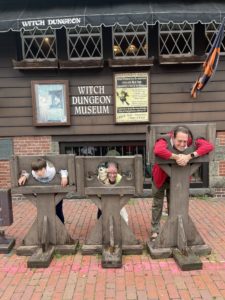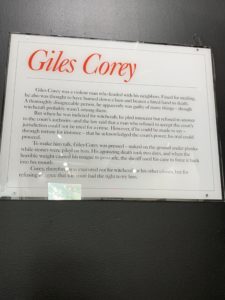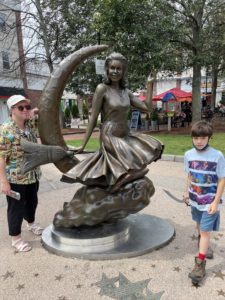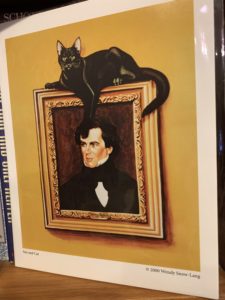Better get this post up before the month is over! Here’s an eclectic list of good reads around the web.
At the Iowa Review, Amanda Peery-Wolf’s “What Can I Ship” is a witty found-poem based on the Union Pacific Online Customer Handbook from 2007. The reader may be alternately numbed and delighted by the sheer volume and random diversity of items that human beings have invented and sold. Strategically placed linebreaks lead one to imagine additional strange mash-ups of existing products:
toasters walking sticks with rubber tips video games mattresses hd
screens jeans green bicycles for boys rubber hands for halloween minidresses
for when she’s starting to come into her own pocket pill containers
horse blankets rabbit biscuits jingly balls for cats eyebrow brushes
keyboard covers car accessories menorahs plastic bags pen caps worry
dolls folding fans molding clay ac units fuel charges apply to all shipments
balled-up tissues tootsie rolls rolling papers live rabbits beach umbrellas…
At the Ploughshares blog, Pepper Stetler‘s essay “The World Will Be Tlön” compares the DSM-5 to the aliens’ rewriting of human history in Jorge Luis Borges’ surreal fable “Tlön, Uqbar, Orbis Tertius”. The human psyche craves order and categorization to such an extent that we confer authority on “expert” psychological diagnoses and overlook their contested political history. As the mother of a daughter with Down syndrome, Stetler can’t ignore the labels that will help her family navigate the medical and educational systems to get the resources they need. However, she remains skeptical enough to value aspects of her daughter’s mental life that the DSM would pathologize. “Intellectual disability is still described in terms of deficits and a failure to meet certain standards, rather than language that might suggest that the environment, the conditions of our modern world, might be what is deficient, which would open up the possibility for social change.”
At MEL, a men’s magazine, Chingy Nea opines that “‘The Sopranos’ Belongs to the Gays Now”. Gay popular culture loves references and memes from the Mafia drama because it’s a show about masculinity as high camp. “Even if they don’t realize it themselves, every man and woman on The Sopranos is performing gender at such a high level that the show smacks of the stuff. And because many queer people live outside the confines of traditional gender roles, we’re more used to recognizing that all of us are performing gender, whether we know it or not.”
I got halfway through Season 4 when “The Sopranos” originally aired, quitting because I didn’t want to see Adriana get whacked. If we go on lockdown from COVID again this winter, or even if we don’t, I suspect I’ll be bingeing the show from the beginning. I have HBO Max now–I am fancy. No more bootleg videotapes from my parents’ friend who had premium cable.
My new passion as of last year is making collage art. My handmade greeting cards are everything that my writing isn’t–upbeat, popular, and easy to understand! Via Poetry Daily, I discovered the online journal Ctrl+V, which is dedicated to creative writing that incorporates visual collage elements. I particularly liked this flower clock poem from Nora Claire Miller, “To Understand a Tendency Consider Its Conditions”.
This cheerful non-manifesto by poet Maggie Smith, part of an interview in the “Stopping By With…” series from the Poetry Society of America, lightened my anxiety:
What do you see as the role of art in public life at this moment in time?
A question I’ve heard asked a lot over the past year (but also in most hard years—which is most years, period) is “What is the role of the poet in these times?” I suspect the expected answer is something about expressing collective grief or outrage, or speaking truth to power, or providing comfort. But my answer is usually, “To do your work.” Any world worth living in and fighting for is a world full of art.
So we do our work, whatever it looks or sounds like, without expecting it to fix or solve anything, without expecting it to heal someone. We just do our work, and perhaps it will mean something to someone else, the way we find art that means something to us.
LitHub published the winners of this year’s Insider Prize, a writing contest sponsored by the journal American Short Fiction for incarcerated writers in Texas. Eva Shelton’s story “Bottles of Grief”, about solidarity and loneliness in a bereavement support group, and Keith Sanders’ essay “The Myth of Me”, about being a rebellious teenage atheist, are both worth a read.
Classicist and poet A.E. Stallings shares a bit of forgotten queer history in “Warrior Eros” at The American Scholar. Reviewing James Romm’s The Sacred Band: Three Hundred Theban Lovers Fighting to Save Greek Freedom, she describes the real-life inspiration for the thought experiment in Plato’s Symposium about “an army of lovers and their loves” who would be bonded by affection to fight to the death.
In Athens and Sparta, romantic, erotic, and sexual relationships between men were largely countenanced and conventional: a couple was composed of an erastes (the lover), the older partner, and the eromenos (the beloved), a youth on the cusp of manhood; “lovers and their loves.” The pro-Spartan Athenian historian Xenophon seems to have been atypical in his disapproval of male-male sexual relationships; in ancient Greece it was arguably unwavering heterosexuality that was “queer.”
But if, as Romm points out, in Athens and Sparta “male erôs was ‘complicated,’” in Thebes and Boeotia it was sanctioned by the state. Male couples could take an oath at the grave of Iolaus, Hercules’s own beloved, to live together as syzygentes—yoke mates—a term that elsewhere indicates a lifelong marital bond. It is etymologically related to “conjugal.” (The modern Greek word for “spouse” is still syzygos.) After running a junta of Spartans out of Thebes in 379 BCE, the Thebans turned their attention to defense. What Thebes needed to keep Sparta’s hoplites (heavily armed infantry) at bay was an elite squad of its own; thus was born the Sacred Band of 300, its couples having sworn the “sacred” oath at Iolaus’s tomb.
When will we get a movie about this??





